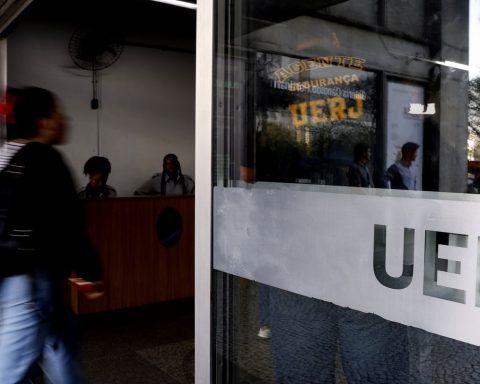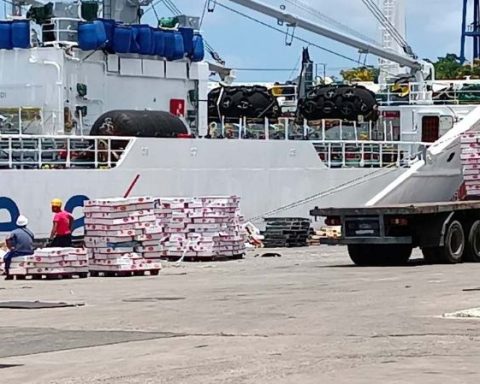It is still common to see cars on the road with a nearly flat tire or vehicles on the side of the road for a tire change.
So is the investment that must be made to replace tires that wear out.
The wheels seem to be the weak link in a car. But is this about to change?
Are we facing the end of the air-filled black rubber donut first used in vehicles in the 1890s, a product designed to be indestructible and therefore difficult to recycle?
On a test track in Luxembourg, a Tesla Model 3 spins around tight corners, accelerates rapidly and makes emergency stops. Nothing strange.
However, that car has four airless tires, made by the American manufacturer Goodyear.
Spokes made of a special plastic support a thin reinforced rubber band. The spokes flex and contort as the car moves forward.
Michael Rachita, senior manager of Goodyear’s non-pneumatic tire (NPT) program, is candid about the limitations: “There will be noise and some vibration. We’re still learning how to smooth out the ride. But we think you’ll be surprised by the performance.”
I wasn’t wrong.
Electric cars and autonomous mobility are changing the needs of tires.
Distribution companies and transportation services want products that are low-maintenance, puncture-proof, recyclable, and have sensors that map road conditions.
Car sharing and public transportation, rather than ownership, are growing in cities. A car with a flat tire is a car that does not make money.
“While air tires will always have their place, a combination of solutions is needed. As we move into a world where self-driving vehicles are becoming more common and many cities offer transport-as-a-service strategies, having a tire free of air maintenance is very important”, says Rachita.
In Goodyear’s laboratories, airless tires are tested for 24 hours straight, under various loads and speeds. There are thousands of kilometers without stopping.
Some beams deform, others break, but the structures continue to function safely, Rachita says.
“It’s test and learn, test and learn,” he says. “But we’re at a stage where we have a tremendous amount of confidence.”
Goodyear rival Michelin has been working with General Motors (GM) on airless tires since 2019.
In February, there were press reports that Michelin’s unique puncture-proof tire system (Uptis) could debut on a new GM-planned Chevrolet Bolt electric car, possibly in 2024.
Uptis tires are made from high-strength resin embedded with fiberglass and composite rubber (for which Michelin has filed 50 patents) to create a mesh structure that surrounds an aluminum wheel.
Cyrille Roget, a scientist and innovation expert at the French tire maker, did not confirm the reports about the Bolt, but told the BBC that Michelin will have more to say this year.
Michelin has been a leader in the airless tire market. Their “Tweel” has been around since 2005 and is used on slow-moving vehicles such as farm equipment.
However, optimizing the technology for road vehicles is an entirely different challenge.
“We have 130 years of experience and knowledge in perfecting inflatable structures like tires. Airless technology is very recent,” says Roget.
However, Uptis is after something bigger. Michelin has been planning for several years to create an airless, connected tire manufactured with a 3D printer and made entirely of materials that can be melted down and reused.
Aside from occasional retreads, it would have zero maintenance, according to the manufacturer.
The heavy weight of the battery means that airless structures are particularly suitable for electric vehicles.
“They can carry more load with a more compliant feel than a pneumatic tire,” says Rachita.
On the other hand, airless tires have a larger contact surface with the road, which increases resistance.
This resistance uses more energy to move the tires forward, which has implications for range and battery life.
And then there is the noise, the hum of the tire on the road.
“With engine noise removed in an electric car, the tires become the dominant source of noise,” describes Matt Ross, editor-in-chief of Tire Technology International.
Also, the stiffness of the plastic spokes transmits more vibrations through the suspension.
Convincing drivers accustomed to the responsiveness and performance of air tires could take time, according to Ross.
However, more important than consumer perception is what regulators decide.
Governments will require rigorous safety testing and standardization of rules. And tire manufacturers will need to invest in new manufacturing facilities and develop supply chains.
This will take years.
Tiremakers are hoping early adopters in niche areas will help push the technology forward.
“Non-pneumatic wheels (NPT) are of particular interest to sectors such as the military, disaster response, security vehicles and specialized machinery,” Klaus Kraus, head of European research and development at Hankook, tells the BBC.
The South Korean company introduced the latest version of its i-Flex NPT in January. Smaller than a conventional tire, a honeycomb of interlocking polyurethane spokes is a major advance in coping with lateral and horizontal stresses, the company says.
Bridgestone, the world’s largest tire maker, is interested in industrial applications in agriculture, mining and construction, where demand could be high from customers who see costly lost productivity when tires fail.
Airless tires, at least initially, will command a premium price. But the ability for regular retreading and 3D printing could be a game changer.
Perhaps, some experts speculate, consumers won’t even need to buy tires outright. Instead, they’ll get them for free and pay-per-mile, with sensors that monitor usage.
This is an illustration of how technology is designing the tire of the future, says Sosia Causeret Josten, an analyst with Goodyear’s Sightline Tire Intelligence division.
As the only contact between the road and the vehicle, tires offer enormous potential.
Perhaps, thanks to the cloud and algorithms, connected vehicles could provide information on where government authorities need to repair roads or place sand or salt when roads freeze.
Another example is automatic braking systems.
“If the anti-lock braking system (ABS) can tell that the vehicle has half-worn tires, it can react faster. This advantage can play an important role in an autonomous future, where the vehicle has to react on its own,” analyzes Josten .
All of this technology need not be unique to airless tires. And not all manufacturers are convinced that NPTs are the future.
“Currently, we believe that pneumatic tires are the best option for most vehicles,” says Denise Sperl, director of research and development for car tires at Continental of Germany.
Tires will always have to “simultaneously meet multiple safety, comfort, performance and sustainability requirements” and air-filled rubber remains the best, he says.
Continental is developing a self-inflation system where pumps and sensors in the tire keep the pressure at optimal levels.
Like all manufacturers, the company is looking for “greener” products.
Polyester from recycled plastic bottles will soon be used in its premium tires, and both Continental and Goodyear are researching a dandelion flower that produces a rubber-like latex.
But sustainable alternatives to conventional materials are only available “up to a certain point,” adds Sperl.
Pneumatic tires have been around for so long for a reason: they do the best job. “We remain convinced of this,” he says.
Remember that you can receive notifications from BBC Mundo. Download the new version of our app and activate it so you don’t miss out on our best content.


















